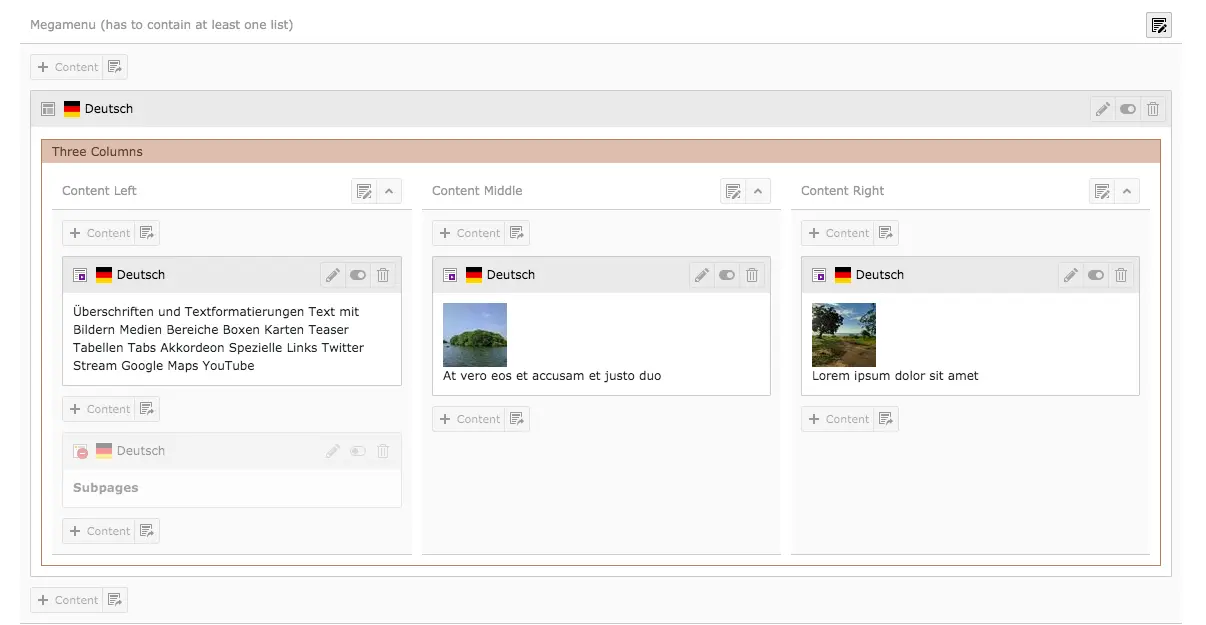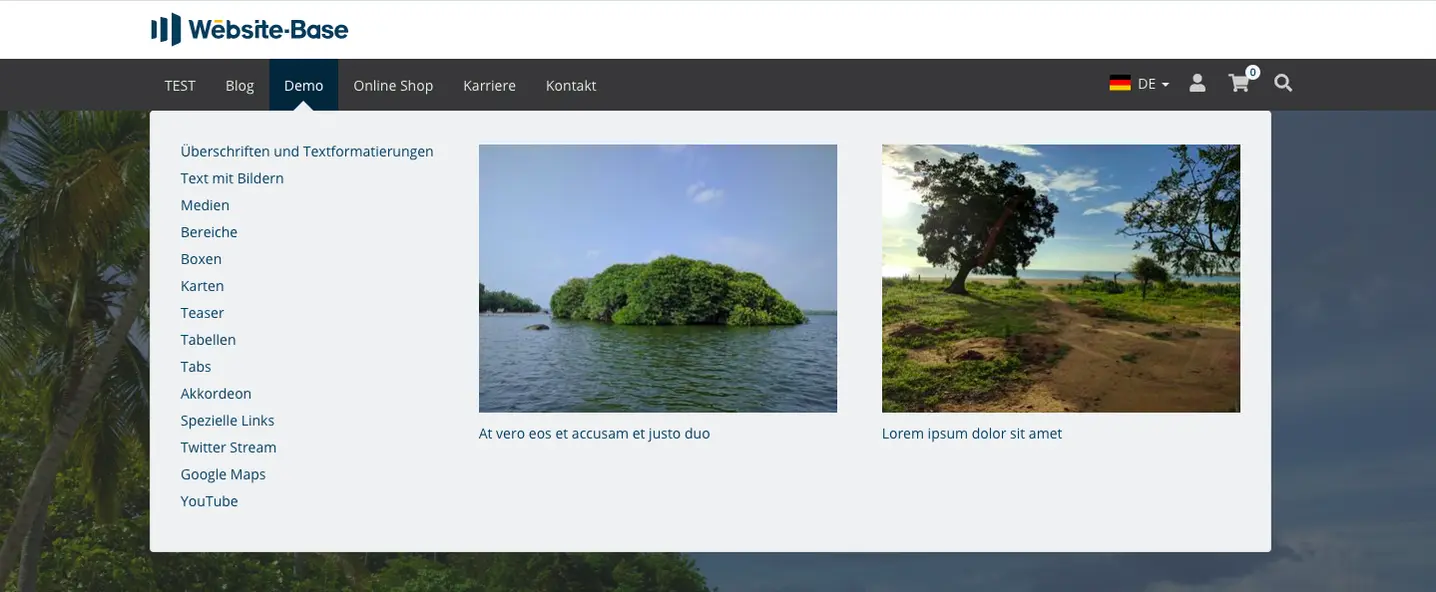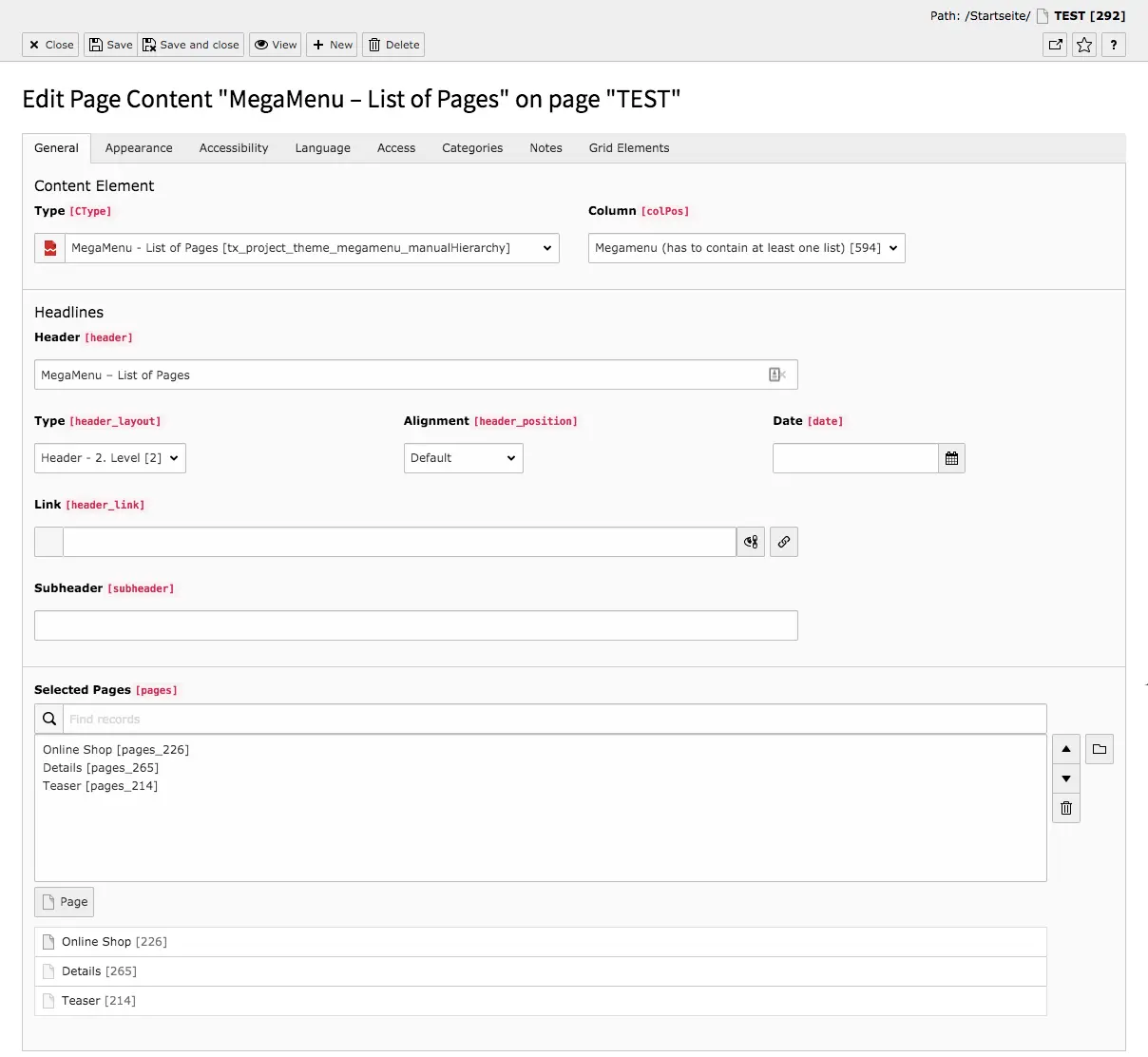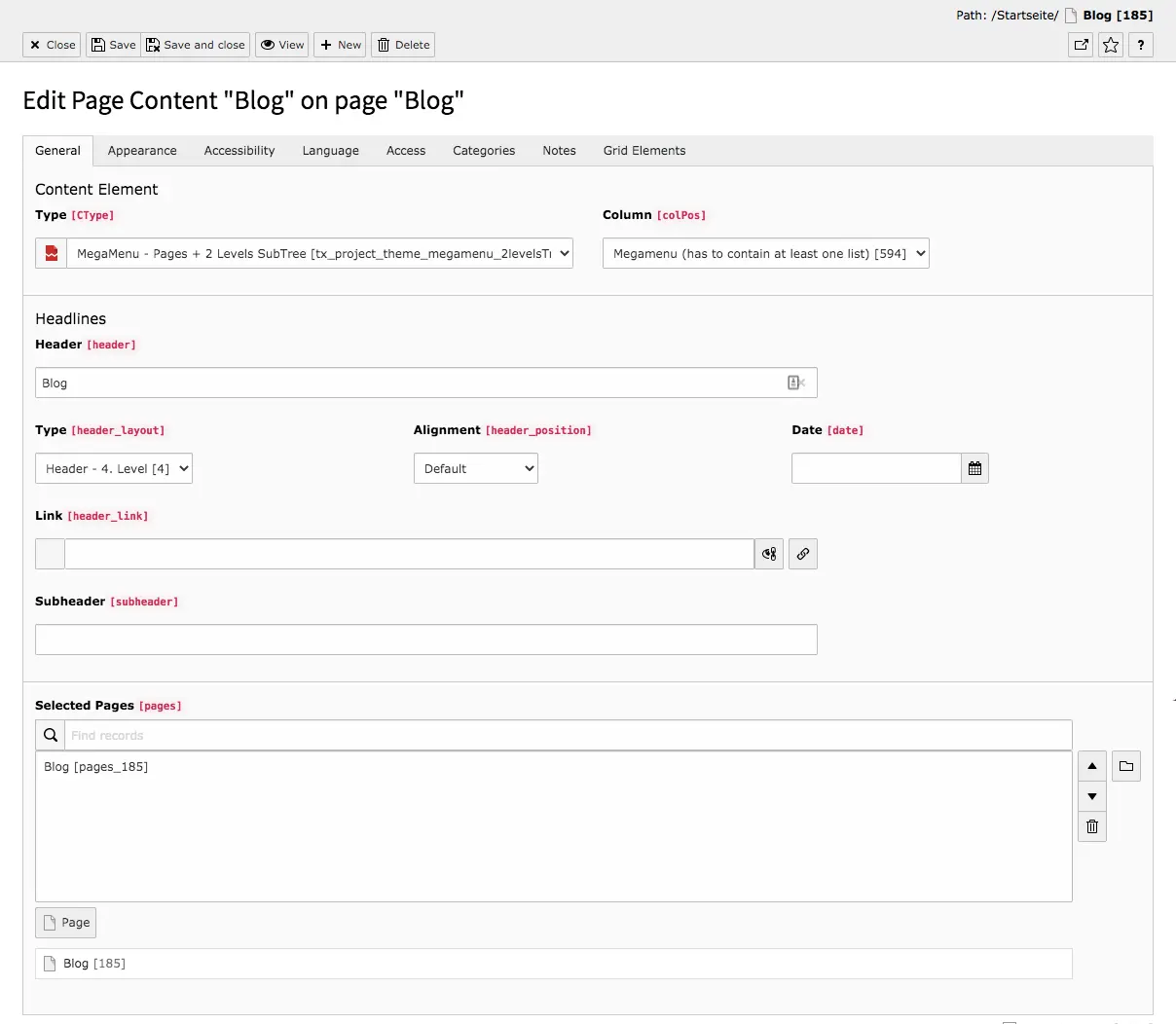MegaMenu - List of Pages


With the MegaMenu for listing pages, you create navigation points for pages that you select individually. It doesn't matter on which level the pages are located, they are all displayed in the same way in the frontend - it is therefore not possible to see how deep a page is in the page tree.
Tab General
Header
The header you assign will appear in the frontend as a menu title. Unlike the navigation points, it is not automatically linked. If you want to link the heading, choose or enter a link in the field provided.
Selected Pages
Select as many pages as you want to display in the megamenu in the frontend.
To add pages simply click the Page button below the field or the folder icon to the right of the field. In the window that appears, click on a page in the page tree. The page is listed immediately in the selection. Repeat this procedure for each page in the menu. In the context window, too, you can open and close subpages by clicking on the arrow icons to the left of the page names.
The pages are output in the sequence in which they are arranged in the field in the frontend. They are also output as pages of the same level. To move pages up or down in the field, click on a page. This marks the page. Now use the arrows to the right of the field to move the page up or down until it is in the desired position. To remove a page again, mark it with a click. Delete the page from the selection by clicking on the recycler icon.






